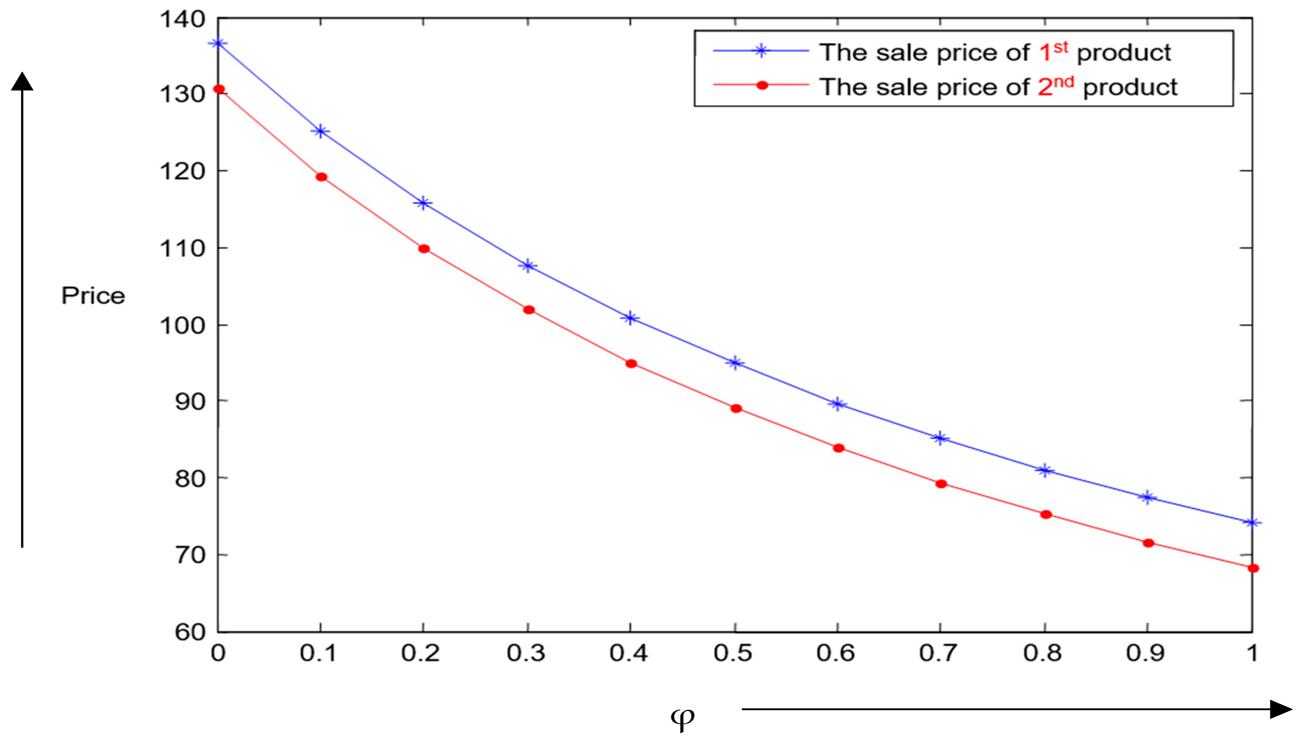
An Optimum Inventory Policy for Exponentially Deteriorating Items, Considering Multi Variate Consumption Rate with Partial Backlogging
Abstract:
Customer purchasing deeds may be affected by factors such as selling price and inventory level instead of demand which is considered either constant or function of a single variable which is not feasible. Consequently, in the present study, we have considered the demand rate as a function of stock-level and selling price both. In the present study, in order to develop this model, it has been assumed that items are exponentially decaying and shortages are partially backlogged and the most realistic backlogging rate is considered. In this research, we proposed a partial backlogging inventory model for exponentially decaying items considering stock and selling price dependent demand rate in fuzzy environment. In developing the model demand rate, ordering cost, purchasing cost, holding cost, back ordering cost and opportunity cost are considered as triangular fuzzy numbers. Graded mean integration representation method is used for defuzzification. A numerical example is provided to illustrate the problem. Sensitivity analysis of the optimal solution with respect to the changes in the value of system parameters is also discussed.
Author(s):
DOI:
Keywords:
References:
Alfares, H.K., (2007), Inventory model with stock-level dependent demand rate and variable holding cost. International Journal of Production Economics 108 (1–2), 259–265.
http://dx.doi.org/10.1016/j.ijpe.2006.12.013
Baker, R.C., Urban, T.L., (1988), A deterministic inventory system with an inventory level dependent demand rate. Journal of the Operational Research Society 39, 823–831.
http://dx.doi.org/10.2307/2583525
Chang, C.-T., (2004), Inventory model with stock-dependent demand and nonlinear holding costs for deteriorating items. Asia-Pacific Journal of Operational Research 21, 435–446.http://dx.doi.org/10.1142/S0217595904000321
Chang C.T., Wu S. J.and Chen Li-C. (2009), Optimal payment time with deteriorating items under inflation and permissible delay in payments, International Journal of Systems Science Vol. 40, No. 10, October 2009, 985–993. http://dx.doi.org/10.1080/00207720902974561
Chang C. T., Chen Yi-Ju, Tsai Tzong-Ru and Wu Shuo-Jye (2010), Inventory models with stockand price dependent demand for deteriorating items based on limited shelf space,Yugoslav Journal of Operations Research Volume 20, Number 1, 55-69. http://dx.doi.org/10.2298/YJOR1001055C
Chung, K.-J., (2003), An algorithm for an inventory model with inventory-level dependent demand rate. Computers and Operations Research 30, 1311–1317. http://dx.doi.org/10.1016/S0305-0548(02)00072-2
Goswami, A. & Chaudhuri, K. S. (1991), An EOQ model for deteriorating items with shortages and a linear trend in demand. Journal of the Operational Research Society, 42 (12), 1105- 1110. http://dx.doi.org/10.1057/jors.1991.204
Hollier R.H., Mak.K.L. (1983), Inventory replenishment policies for deteriorating items in a declining market. International Journal of Production Economics, 21(7), 813–826.
http://dx.doi.org/10.1080/00207548308942414
Goyal S.K, Giri B.C. (2003), The production-inventory problem of a product with time-varying demand, production and deterioration rates. European Journal of Operational Research, 147(3), 549–557. http://dx.doi.org/10.1016/S0377-2217(02)00296-5
Goyal S. K. and Chang C. T. (2009), Optimal ordering and transfer policy for an inventory with stock dependent demand, European Journal of Operational Research 196,
–185. http://dx.doi.org/10.1016/j.ejor.2008.02.029
Mandal, B.N., Phaujdar, S., (1989), An inventory model for deteriorating items and Stock dependent consumption rate. Journal of the Operational Research Society 40, 483–488. http://dx.doi.org/10.1057/jors.1989.75
Park K.S. (1982), Inventory models with partial backorders. International Journal of Systems Science, 13, 1313–1317. http://dx.doi.org/10.1080/00207728208926430
Ray, J., Goswami, A., Chaudhuri, K.S., (1998), On an inventory model with two levels of storage and stock-dependent demand rate. International Journal of Systems Science 29, 249–254. http://dx.doi.org/10.1080/00207729808929518
Singh S.R.And Singh T.J. (2008), Perishable inventory model with quadratic demand, partial backlogging and permissible delay in payments, International Review of Pure and Applied Mathematics, 1, 53-66.
Skouri K., Konstantaras I., Papachristos S., and Ganas I. (2009), Inventory models with ramp type demand rate, partial backlogging and Weibull deterioration rate, European Journal of Operational Research, vol. 192, no. 1, pp. 79–92. http://dx.doi.org/10.1016/j.ejor.2007.09.003
Wee H.M. (1995), A deterministic lot-size inventory model for deteriorating items with shortages and a declining market. Computers & Operations Research, 22(3), 345–356.
http://dx.doi.org/10.1016/0305-0548(94)E0005-R
Wu, K.S., Ouyang, L.Y., Yang, C.T., (2006), An optimal replenishment policy for non-instantaneous deteriorating items with stock-dependent demand and partial backlogging, International Journal Production Economic, 101(2), 369–384. http://dx.doi.org/10.1016/j.ijpe.2005.01.010
Zadeh L. (1965), Fuzzy sets”. Information and Control 8:338–53. Park KS. (1987), “Fuzzy-set theoretic interpretation of economic order quantity. IEEE Transactions on Systems, Man, and Cybernetics”, SMC-17:1082–4. http://dx.doi.org/10.1016/S0019-9958(65)90241-X


